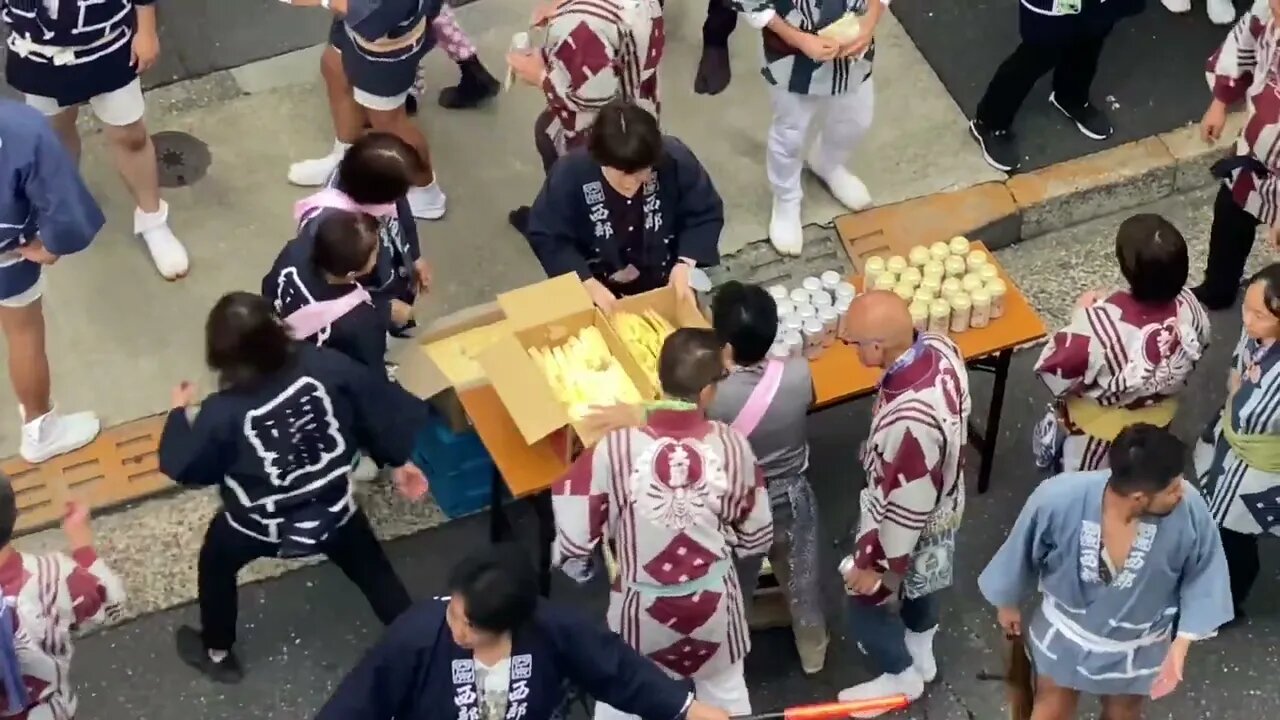Premium Only Content

End of Summer Matsuri and Street Party #japan #matsuri #autumnequinox
The course of a matsuri
The sacred ceremony
A matsuri generally takes place in two parts : the sacred part where the priest or the higher priestess, gûji sama, invokes the divinity by incantations and asks her to "descend" into the relic of the sanctuary, the physical incarnation of the kami , that the guji sama will place in the main mikoshi that it will seal.
This sacred ceremony takes place "behind closed doors", inside the sanctuary ( honden ), where the relic of the kami is deposited. Only members of the sanctuary and a few personalities can attend these rituals. Access to the honden is still prohibited to the public.
This very ritualized sacred ceremony is followed by the procession of mikoshi , a popular festivity imbued with dynamism and gaiety where the sacred character of the festival is sometimes difficult to detect ...
Mikoshi carriers
The mikoshi bearers are generally divided into three groups : the members of the sanctuary, sometimes dressed in white, a symbol of purity. Ordinary people , in general the inhabitants of the neighborhood, sometimes wearing a yukata and… the yakuza . Yes, these members of the Japanese mafia, usually excluded from Japanese society, are an integral part of these Shinto festivals. This is explained by the fact that those who run the stands during the festival were hawkers placed under the authority of an oyabun (godfather / leader). Some of them could wear the mikoshi. This corporation gradually developed into a mafia and the yakuza did not want to lose the role they had during these festivals. In the parties where they have always participated, they are accepted de facto. We recognize them by their tattoos, which they can proudly show off during the party.
Formerly, only men (women, considered impure, were excluded although in antiquity shaman priestesses were venerated!) From the shrine district had the right to carry mikoshi or to pull chariots. Little by little, women were accepted. Nowadays, with the depopulation of the countryside, the number of young people and modern entertainment, some villages or neighborhoods lack participants and accept or even ask for the participation of people from outside. Sometimes you can even see foreigners wearing the mikoshi. They are generally residents.
The mikoshi procession
Guided by a sumptuously dressed Shinto priest who waves his sacred pine branch ( sasaki ) to bless the neighborhood, mikoshi bearers parade through the streets to the sound of traditional Japanese instruments such as the taiko (Japanese drum) or the flute. Sometimes they are accompanied by dancers and are always followed by residents of the neighborhood or anyone wishing to join the procession.
The parade of mikoshi and / or floats passes through the streets of the city to ask the deities to bring their blessing to the inhabitants but also to entertain them and show them their neighborhood. This is why the "divine palanquins" are, during the procession, sometimes strongly agitated from top to bottom and from left to right: we want to amuse the gods and show them the fervor of their faithful.
All this under the very dynamic "song" of “Oissa! Oissa! ” or others "Washoï, washoï". The procession ends in front of the shrine, with redoubled energy to shake the portable temples.
During well-deserved breaks, local shops and restaurants offer mikoshi carriers drinks and snacks. At the end of the party, each porter receives a small gift: fruit, cakes ...
-
 LIVE
LIVE
Right Side Broadcasting Network
9 days agoLIVE: TPUSA's America Fest Conference: Day Three - 12/21/24
7,282 watching -
 29:53
29:53
MYLUNCHBREAK CHANNEL PAGE
1 day agoUnder The Necropolis - Pt 1
45.8K17 -
 2:00:10
2:00:10
Bare Knuckle Fighting Championship
3 days agoCountdown to BKFC on DAZN HOLLYWOOD & FREE LIVE FIGHTS!
16.2K2 -
 2:53:01
2:53:01
Jewels Jones Live ®
1 day agoA MAGA-NIFICENT YEAR | A Political Rendezvous - Ep. 103
28.2K12 -
 29:54
29:54
Michael Franzese
6 hours agoCan Trump accomplish everything he promised? Piers Morgan Article Breakdown
52.4K28 -
 2:08:19
2:08:19
Tactical Advisor
10 hours agoThe Vault Room Podcast 006 | Farwell 2024 New Plans for 2025
125K11 -
 34:12
34:12
inspirePlay
1 day ago $4.00 earned🏆 The Grid Championship 2024 – Cass Meyer vs. Kelly Rudney | Epic Battle for Long Drive Glory!
43.3K8 -
 17:50
17:50
BlackDiamondGunsandGear
7 hours ago $0.69 earnedTeach Me How to Build an AR-15
24.6K2 -
 9:11
9:11
Space Ice
23 hours agoFatman - Greatest Santa Claus Fighting Hitmen Movie Of Mel Gibson's Career - Best Movie Ever
89.2K36 -
 42:38
42:38
Brewzle
1 day agoI Spent Too Much Money Bourbon Hunting In Kentucky
56.7K6